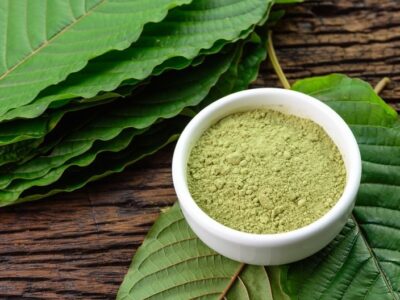Skin diseases have both a physical and emotional impact. One of them, experienced by millions of people worldwide, is Xerosis. This is a word derived from the Greek language, where Xero means dry, and osis means disease or medical disorder.
Its improvement goes through eating habits, personal care, and hygiene changes.
Being such a common pathology, it is convenient to know its causes, symptoms, measures to prevent it, and the suggested treatment to treat it. After all, you don’t know when you or someone close to you might suffer from it.
What is Xerosis?
Xerosis, the medical name for dry skin, has its origin in the lack of hydration in the skin, as it can also be due to other diseases. Those who suffer from it have dry and rigid skin, which can become rough and scaly due to the detachment of the stratum corneum.
Under normal conditions, a delicate system operates in the skin that adapts to changing hydration needs and concentrates molecules that attract and retain water. This condition significantly affects this body mechanism.
Causes that cause Xerosis on the skin
The causes of Xerosis can be attributed to endogenous factors, such as diseases that can affect the skin, and exogenous reasons, such as the environment and poor personal hygiene habits. We will analyze both scenarios to understand better how it occurs.
Among the internal causes that can produce dry skin, we will point out the following:
- Diseases. Medical skin problems such as psoriasis, eczema, ichthyosis, and other pathologies such as diabetes and hypothyroidism have dry skin as a characteristic symptom.
- Aging. Unfortunately, as the body ages, the lipid levels of the outermost layer of the epidermis, better known as the stratum corneum, decrease.
- Dehydration. If the body suffers from dehydration for any reason, likely, this will also be reflected in the skin.
- Medication consumption. If certain diuretics are consumed, the body will likely become dehydrated, resulting in Xerosis.
Now, there are also external factors that cause Xerosis, for example:
- Weather conditions. Both in the cold winter, when temperatures and humidity levels drop, and in the heat of summer, when prolonged exposure to ultraviolet rays, water evaporates from the skin more quickly. In both cases, the result is that the skin tends to dry out.
- Hot showers. The habit of taking hot baths very frequently causes dry skin problems.
- Improper hygiene. Wash your hands very regularly using abrasive detergents that remove natural lipids, causing damage to the skin.
Symptoms of Xerosis
Although Xerosis can be temporary, it can become a disease that you will have to fight for a lifetime with specific seasonal manifestations. Its symptoms vary depending on the environment, age, and health condition. Some can be mild and others more serious.
The most frequent signs that indicate its existence are these:
- Pruritus (itch)
- Redness of the skin
- Feeling of tightness in the skin, particularly after bathing
- Rough skin
- Cracks that can bleed
- Scaly skin
Risk factors to suffer from Xerosis
Any person at any given time can present Xerosis, and no one is exempt from it. Still, some conditions make you more likely to develop it.
The risk factors to this disease are:
- Use of swimming pools: If you usually swim in pools maintained with chlorine, do not be surprised if you get to present epidermal problems.
- Employment: Those who, due to their work, immerse their skin in water very regularly are more likely to get skin diseases.
Measures to prevent Xerosis
Applying a set of measures will prevent the skin from drying out excessively. Below, we discuss the most effective advice offered by the field of dermatology:
- Moisturize the skin. Moisturizers seal the skin, preventing water from evaporating more quickly.
- Eat healthy and balanced. Foods such as fruits and vegetables provide excellent vitamins that promote good hydration
- Protect yourself from the weather. Especially in cold environments or where the wind blows a lot, it is essential to cover up as much as possible.
- Wear suitable clothing. It is better to use garments made with natural fibers, such as cotton and silk, as they do not irritate the skin, which is not the case with wool.
- Limit time in the shower. Make sure you don’t spend so much time in the rain, the jacuzzi, or taking hot baths. Daily sessions of 10 minutes or less are preferable.
- Use of rubber gloves. If you use powerful cleaners for work or home reasons, do not forget to make resistant rubber gloves.
- Use of detergents. For washing clothes, it is suggested to avoid perfumed and dyed detergents, as they tend to remain on the clothes and irritate the epidermis.
Effective treatment of Xerosis
Generally, the treatment applied for Xerosis is not preventive but to calm its effects. The aim is to moisturize the skin to alleviate the bothersome symptoms, with care for the facial skin, legs, arms, and the rest of the body, including moisturizing and cleansing.
A practical solution is the application of vegetable oils and topical steroids such as moisturizers and moisturizers containing urea, which dry skin suffers from.
As Xerosis is caused by a lack of dermal lipids and natural moisturizing factors, the necessary elements are supplied topically so that the skin restores its ability to regulate hydration.
If you want to achieve superior results, try that the selected formulas contain ceramide, in addition to urea. These better fulfill the function of optimizing the skin’s hydration and preventing it from presenting a rough and dry appearance to the eye and the touch.
Another very effective alternative is over-the-counter creams that contain lactic acid and urea. Formulas like these are used in the Urearepair Plus range for dry skin.












Comments